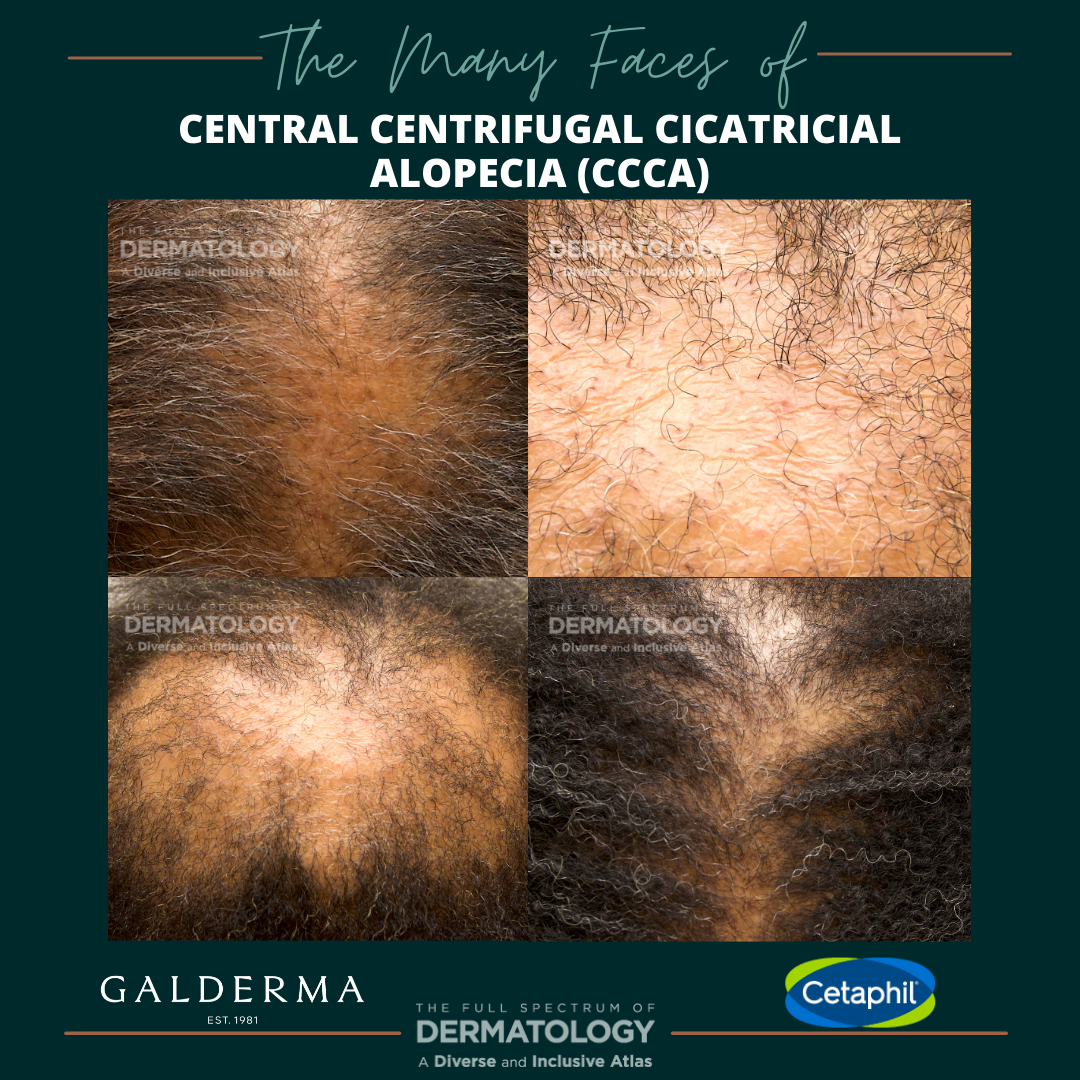Unique characteristics of Central Centrifugal Cicatricial Alopecia (CCCA) range from hair breakage and thinning to follicular dropout and scarring to pinpoint papules within areas of new onset scarring.
Central centrifugal cicatricial alopecia (CCCA) is a progressive scarring alopecia affecting 3-6% of middle-aged, almost exclusively, Black women. CCCA classically presents as a patch of hair loss with shiny appearance on the vertex scalp. Majority of patients present late into the disease state with irreversible scarring and equivocal permanent hair loss. Therefore, early detection through education of primary care providers and hair stylists is imperative for prevention and management.
Though the exact pathogenesis is unknown, an autosomal dominant genetic defect of the internal root sheath (PADI3) has been suggested from recent studies. Fibroproliferative genes such as PDGF, COLI, COLIII, MMP1/2/7 have been found to be upregulated in CCCA. Association between CCCA and increased risks for uterine fibroids and type 2 diabetes mellitus have also been reported.
Nuances to Highlight
Trichoscopy can aid in diagnosis; perifollicular halos, perifollicular erythema, and perifollicular scale can be useful clues. Additionally, the presence of tenderness, burning, or pruritus is a cardinal sign of active disease and need for anti-inflammatory therapy. Traumatic hair practices, such as tight sew-ins, long term use of braids or heavy extensions, chemical straightening, and hair dyeing are known aggravating factors that should be avoided after onset of the condition.
This article is part of Next Steps in Derm series “The Many Faces of” which showcases side-by-side images of some of the most commonly seen dermatology conditions in an array of skin tones and briefly highlight nuances in clinical presentation. All images featured in the series are part of The Full Spectrum of Dermatology: A Diverse and Inclusive Atlas, a resource developed by co-editors Misty Eleryan, MD, MS, and Adam Friedman, MD, and published by SanovaWorks and Educational Testing & Assessment Systems.
NOW AVAILABLE! Visit the online image gallery for The Full Spectrum of Dermatology: A Diverse and Inclusive Atlas, where you will find high-quality images that you will be able to use, free of charge, for non-commercial educational purposes. Access the online gallery here.
The Full Spectrum of Dermatology: A Diverse and Inclusive Atlas DIGITAL EDITION is available for purchase here.
Acknowledgements
We thank co-editors Misty Eleryan, MD, MS, and Adam Friedman, MD for reviewing the content of this article.
Reference
Eleryan, Misty, and Adam Friedman. The Full Spectrum of Dermatology: A Diverse and Inclusive Atlas. SanovaWorks, 2021.
Did you enjoy this article? You can find more here.



